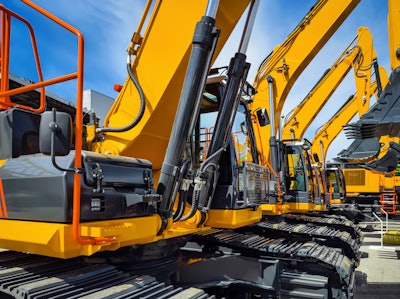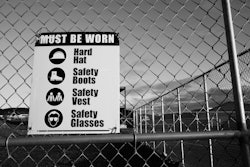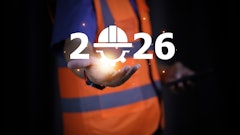
Over the past four years, inflation has significantly impacted the construction industry. Rising costs for materials, labor and equipment have led to increased project budgets and longer timelines. As prices for essential resources like lumber, steel, concrete, and even labor have soared, construction companies have faced challenges in maintaining profitability and project timeliness. Additionally, the shortage of skilled workers has driven up wages, further contributing to rising costs.
These factors have combined to create a challenging environment for the industry to thrive in, with some projects being delayed or even canceled due to financial strain. Inflation-driven increases in equipment costs and fuel prices have challenged construction fleet managers. These rising expenses have constrained budgets, leaving little room to invest in cutting-edge technologies like telematics, which could lead to enhanced fleet performance and project reliability.
Working with these burdens in mind, companies and contractors are finally getting some relief; as inflation stabilizes, construction companies can redirect resources and reassess how telematics can benefit their fleets. According to a Forbes report, easing inflation and falling interest rates are creating favorable conditions for advancing new technologies. For construction businesses, this financial shift provides the flexibility to reevaluate and invest in telematics systems that weren’t financially available to them to streamline operations, reduce downtime and improve safety — all critical factors for maintaining competitiveness in a demanding industry.
Easing Inflation Creates Room for Technological Advancements
During periods of high inflation and operational costs, construction fleets prioritized keeping operations running with existing technology rather than adopting more advanced systems. Now, however, construction companies have a unique opportunity to reevaluate these previous decisions as inflation eases. With the financial strain easing, advanced telematics systems have become more accessible, allowing construction fleets to adopt solutions that provide real-time insights into vehicles and heavy equipment, ultimately improving efficiency and operational performance.
One of the most valuable features of modern telematics systems is real-time tracking. For construction companies managing multiple job sites at once, real-time tracking ensures that fleet managers know exactly where each piece of equipment is at any given moment. Powerful analytics tools provide a comprehensive view of fleet operations, helping managers optimize performance and proactively address challenges. This visibility allows for more efficient resource allocation, guaranteeing that machinery is available where and when it's needed most. The ability to track equipment also minimizes delays caused by the mismanagement of assets, reducing downtime and improving bottom lines with in-depth insights.
In addition to tracking, telematics systems can monitor idle times, a major factor in managing operational costs. Heavy machinery that spends too much time idling wastes fuel and experiences unnecessary wear and tear on the engine. By monitoring idle times, fleet managers can identify where inefficiencies are occurring and implement changes, such as optimizing scheduling or training operators to reduce idling. This reduction in idle times leads to lower fuel consumption and maintenance costs, which are needed to run a cost-effective fleet.
Another important function of telematics in construction is the ability to track maintenance schedules. Unplanned equipment and vehicle breakdowns have a ripple effect, costing company fleets $3.3 billion USD each year. Not only are they highly disruptive to construction projects, leading to delays and increased costs, but they also affect others involved, such as subcontractors. Telematics systems help fleet managers stay on top of maintenance needs by providing automated alerts when machinery is due for service. This proactive approach to maintenance reduces the likelihood of unexpected breakdowns, keeping projects on schedule and minimizing downtime.
Telematics also helps fleets manage regulatory compliance. The construction industry is subject to numerous regulations, including safety standards and environmental guidelines, and staying compliant can be a resource-intensive process. Telematics systems can act as a true partner, automating much of this work by tracking inspections, certifications and maintenance records so that all equipment meets regulatory requirements without adding to the administrative burden.
Why the Right Telematics Provider Is Essential for Construction Fleets
The value of a telematics system lies not just in the technology itself but in the support, insights and customization offered by the vendor. In this improved economic climate, construction fleet managers should carefully evaluate their telematics providers. Are they simply offering a solution, or are they a true partner capable of adapting to the fleet's evolving needs? A telematics partner should work closely with fleet managers to ensure the system delivers actionable data that enhances day-to-day operations while providing long-term value.
The right telematics system can offer much more than just vehicle tracking — it is a tool for optimizing heavy equipment usage, monitoring fuel consumption and ensuring compliance with safety regulations. However, not all telematics providers are created equal. Fleet managers should look for vendors that can act as strategic partners, offering solutions tailored to the unique needs of the construction industry. A good telematics provider will:
- Enhance Job Site Safety: Construction sites are high-risk environments where safety is the top priority. Telematics solutions can monitor driver behavior, track equipment maintenance needs, and alert managers to potential safety risks. This enables proactive interventions that minimize accidents and equipment breakdowns, helping companies avoid costly downtime and liability issues.
- Optimize Fuel Management: Fuel costs are a significant expense for construction fleets, especially for heavy equipment. By using telematics data to monitor fuel usage, idling times, and route efficiency, fleet managers can implement strategies to reduce fuel consumption and cut operational costs.
- Future-Proof the Fleet: Investing in advanced telematics now, during this period of financial stability, ensures that fleets are better equipped to handle current challenges and adapt to future ones. By implementing cutting-edge solutions today, fleets can stay competitive in an increasingly tech-driven industry.
- Ensure Seamless Integration: From equipment installation to data management, the right partner handles the technical aspects, minimizing disruption and ensuring the fleet operates at peak efficiency.
Empower Drivers: Comprehensive training ensures drivers can effectively use the technology and provides the tools and information they need to perform at their best. A true partner will also share industry best practices, helping optimize performance and achieve cost savings.
The right telematics solution can be the key to fleets staying ahead of the curve as the demand for efficiency and safety grows in the construction industry and beyond. Now is the time for construction fleets to reassess their technology strategies, take advantage of favorable economic conditions and choose a telematics provider that acts as a true partner — helping them navigate both current challenges and future demands. By making these strategic investments today, fleet managers in all industries can ensure they are well-equipped for sustainable growth and operational excellence in the years to come.



















